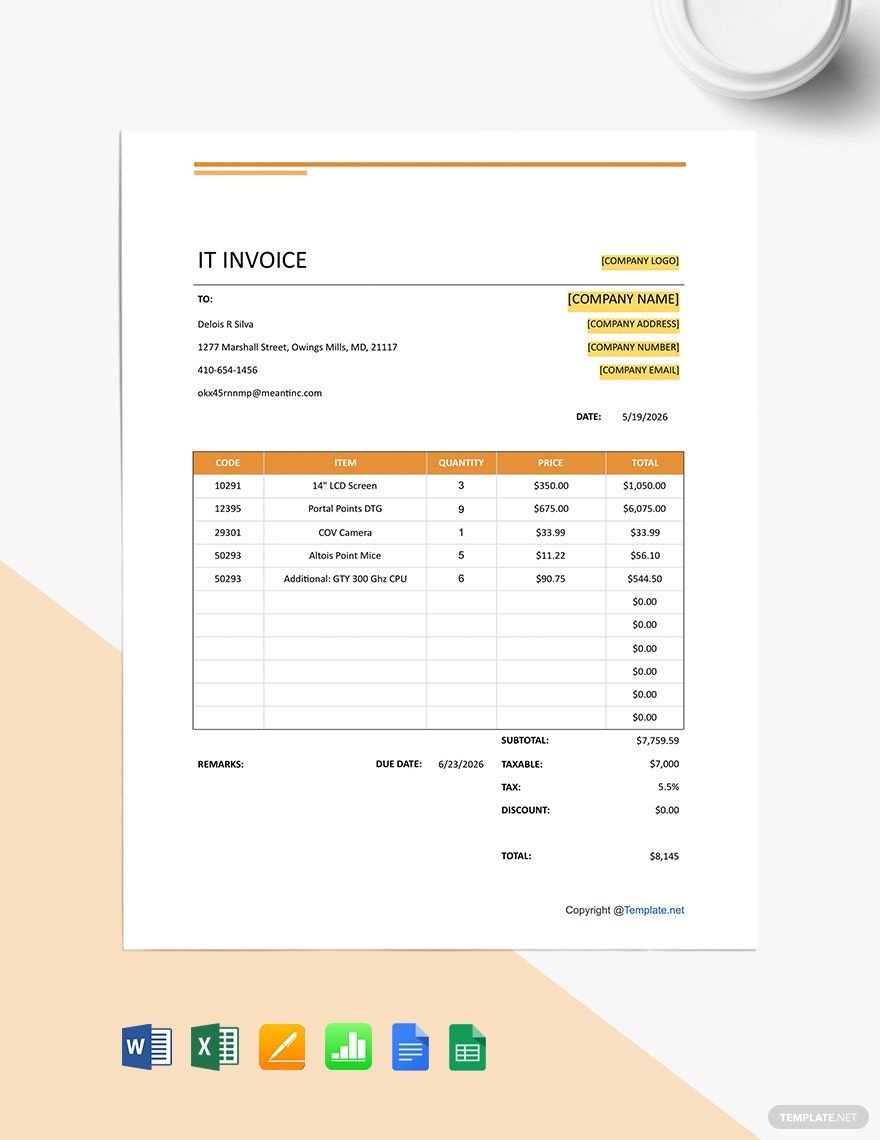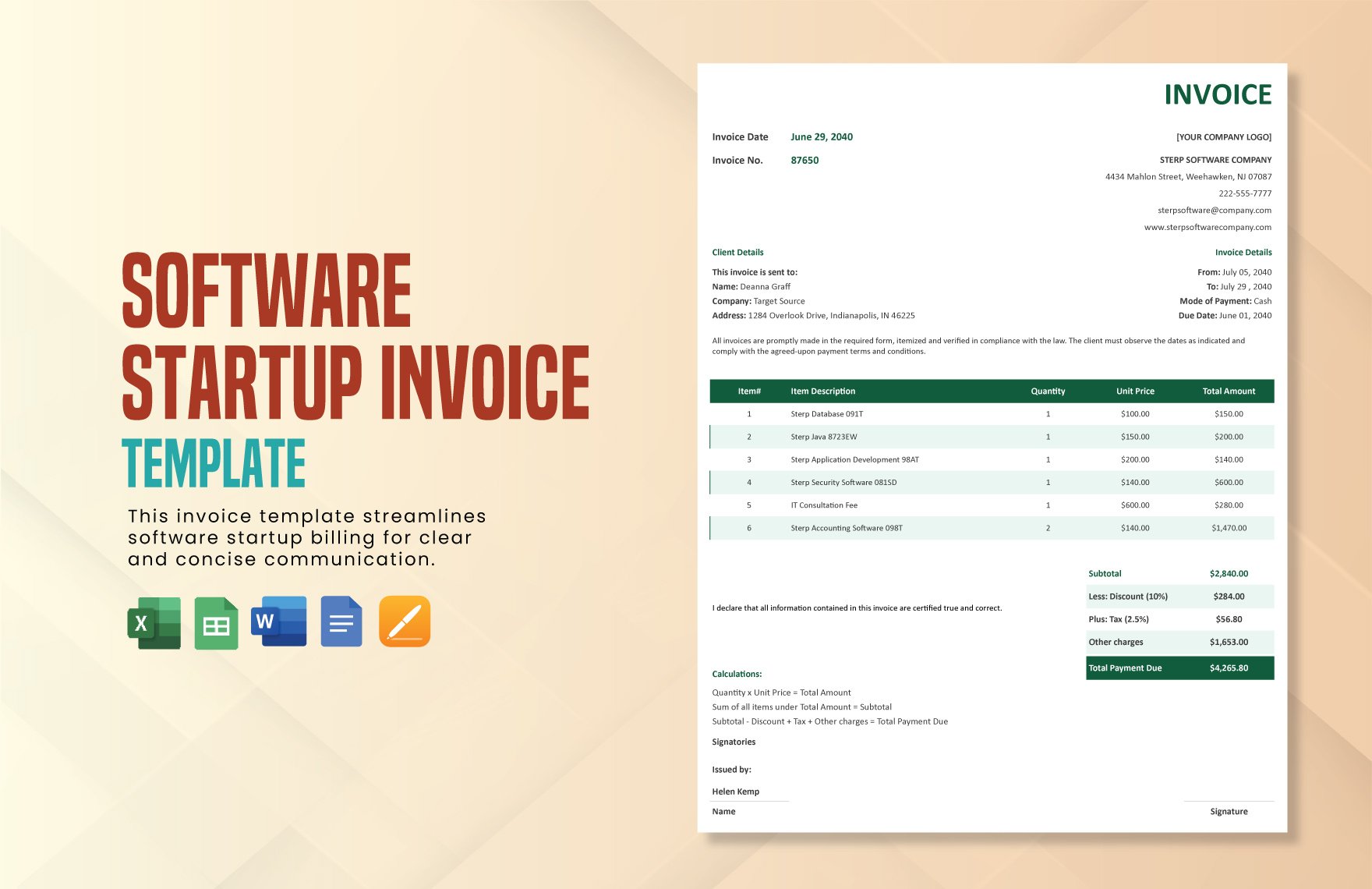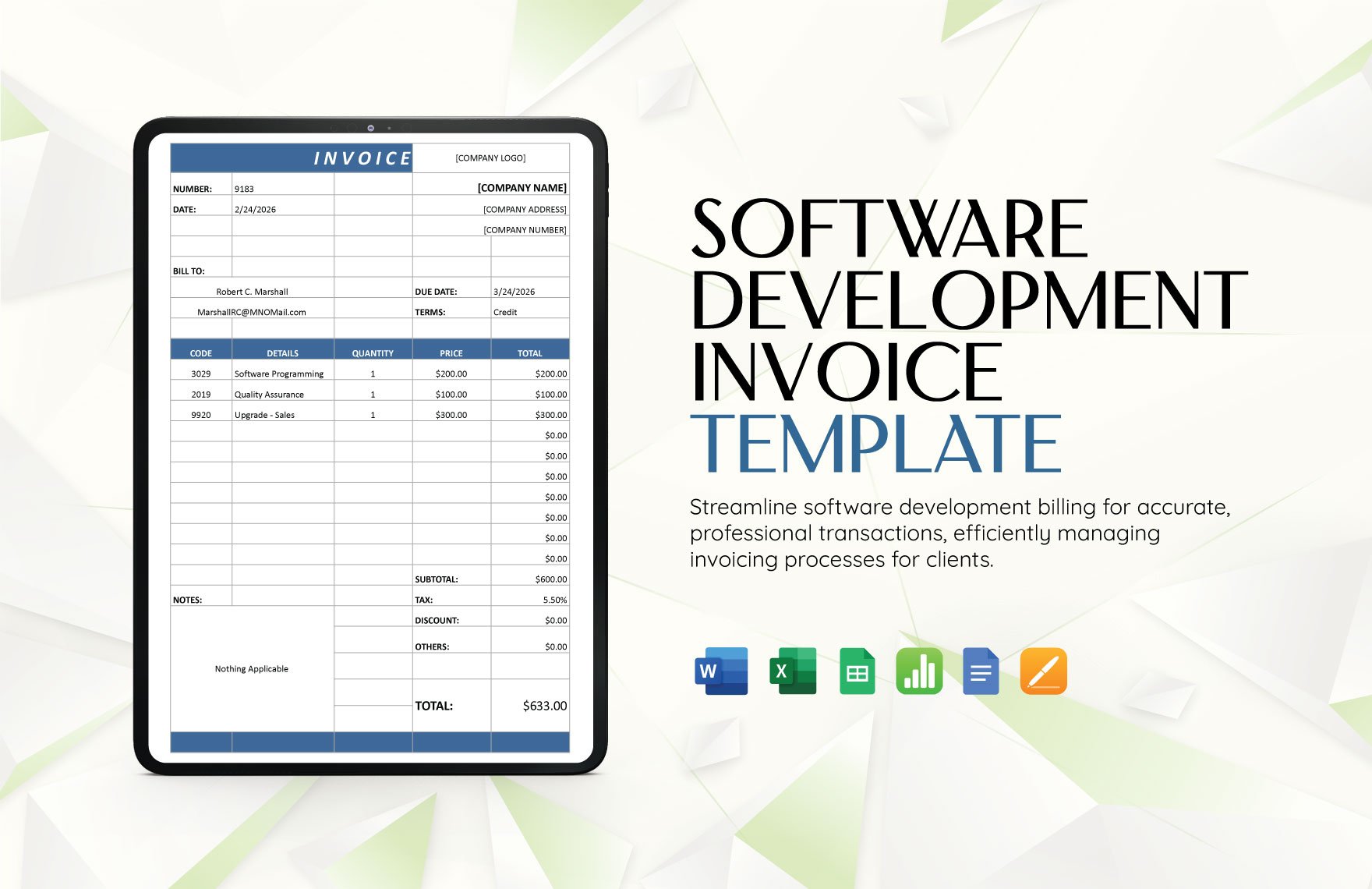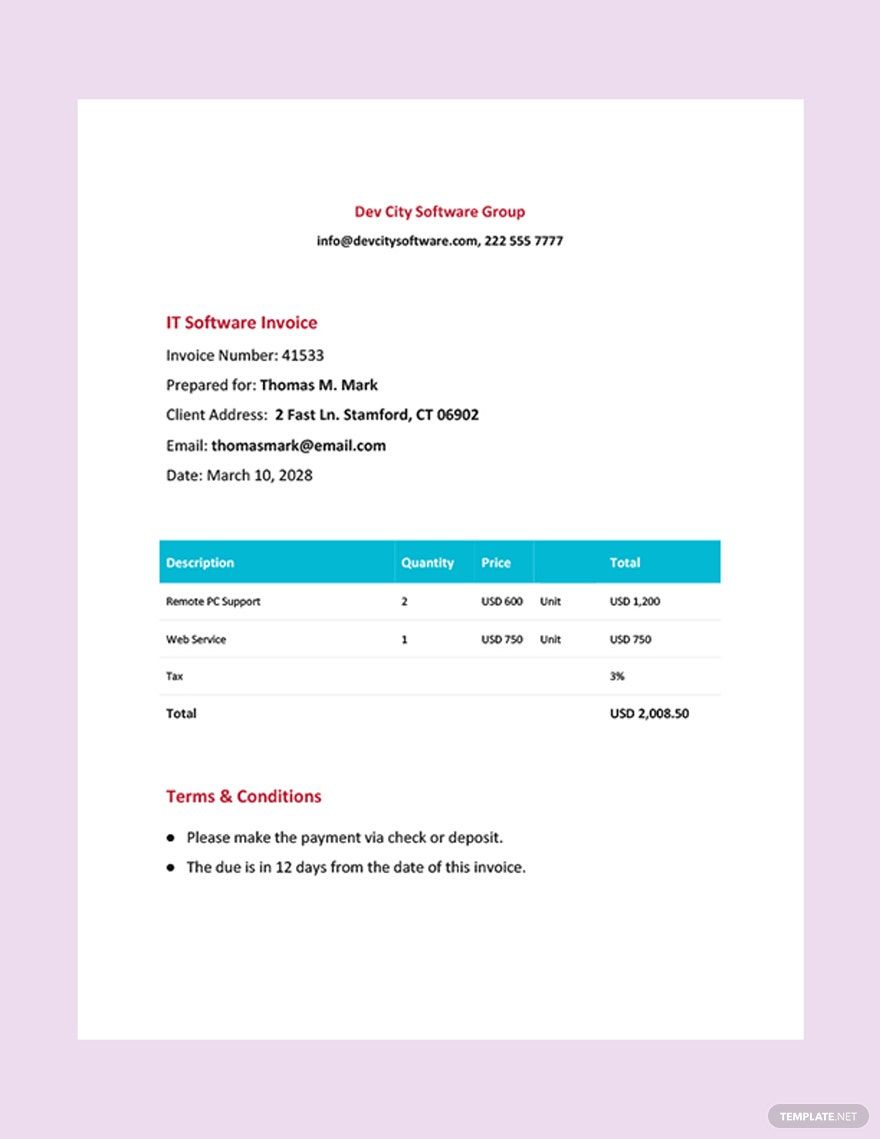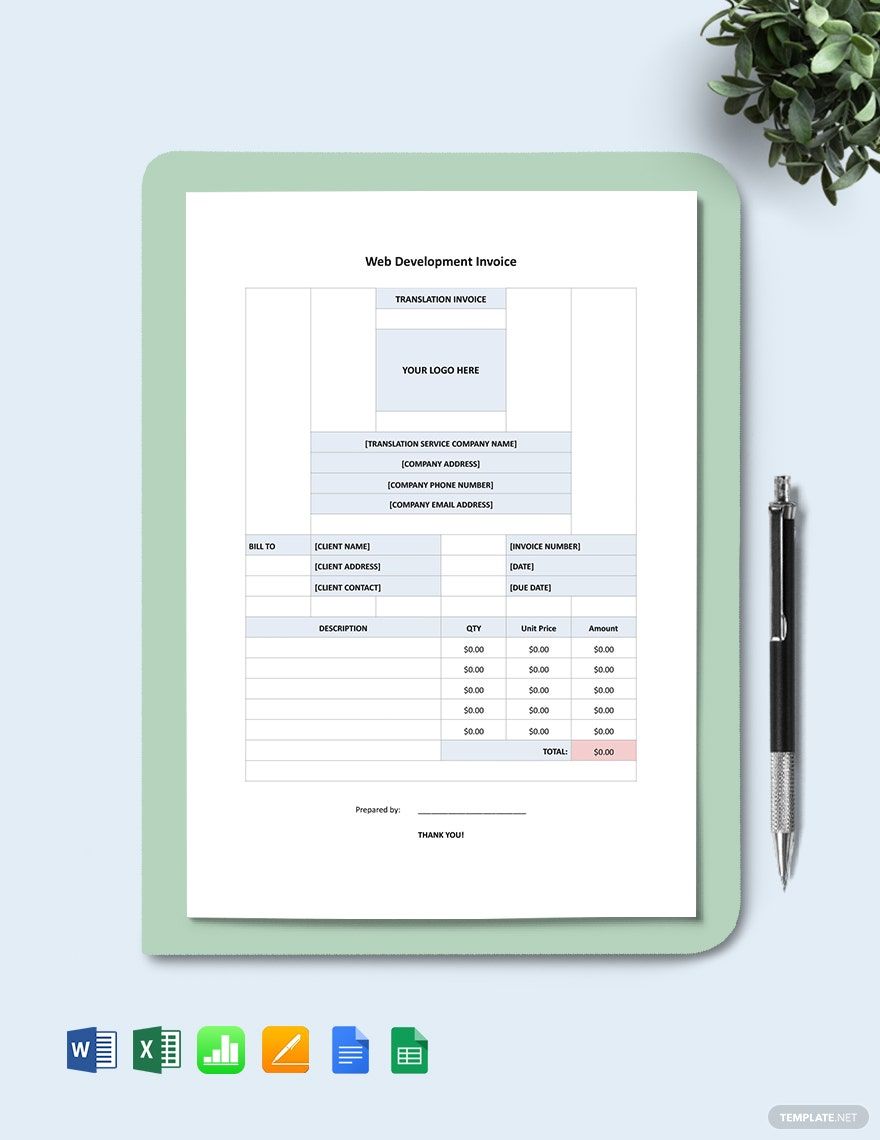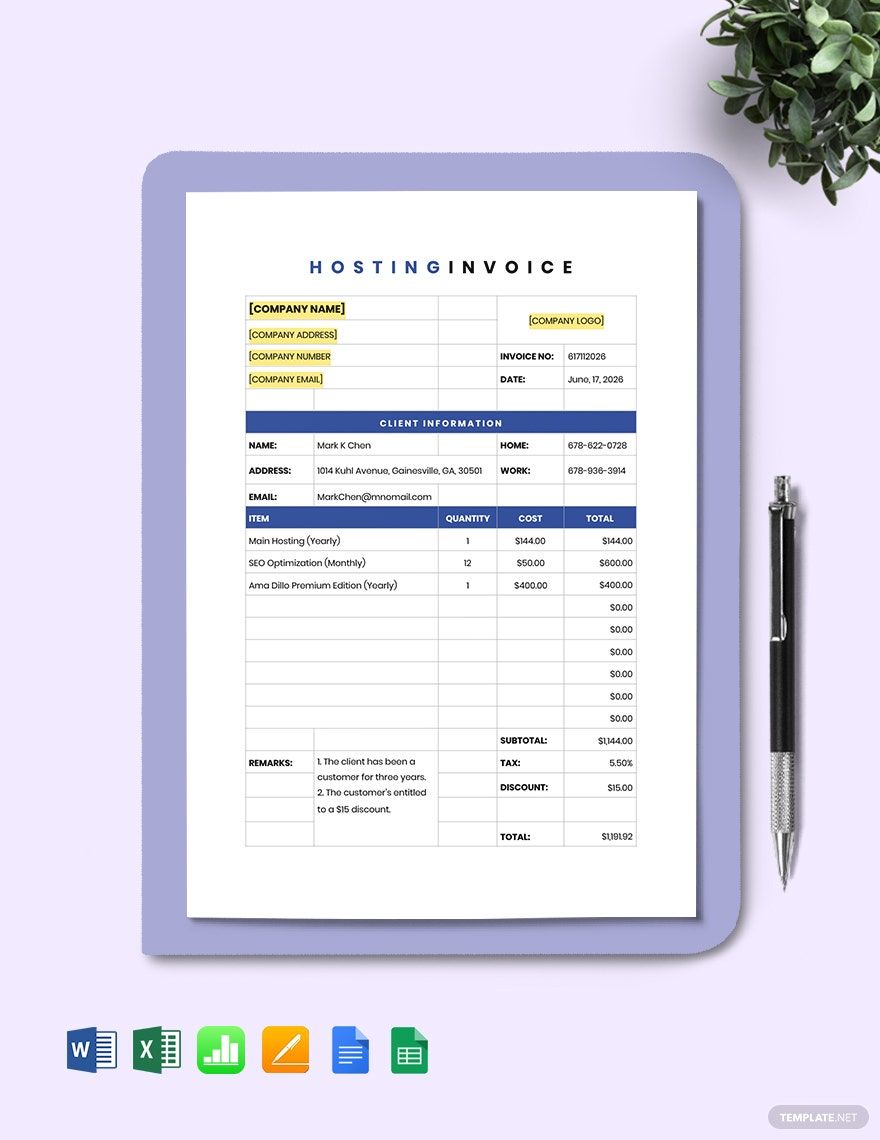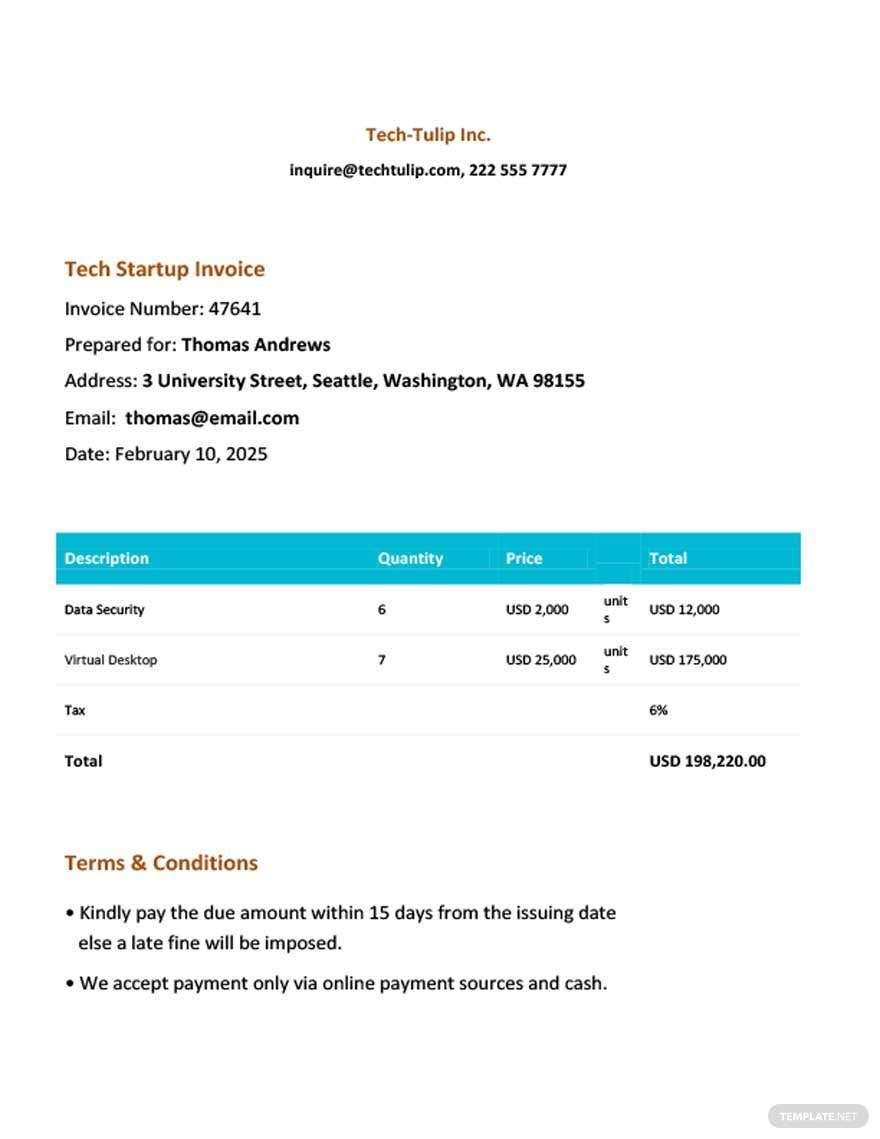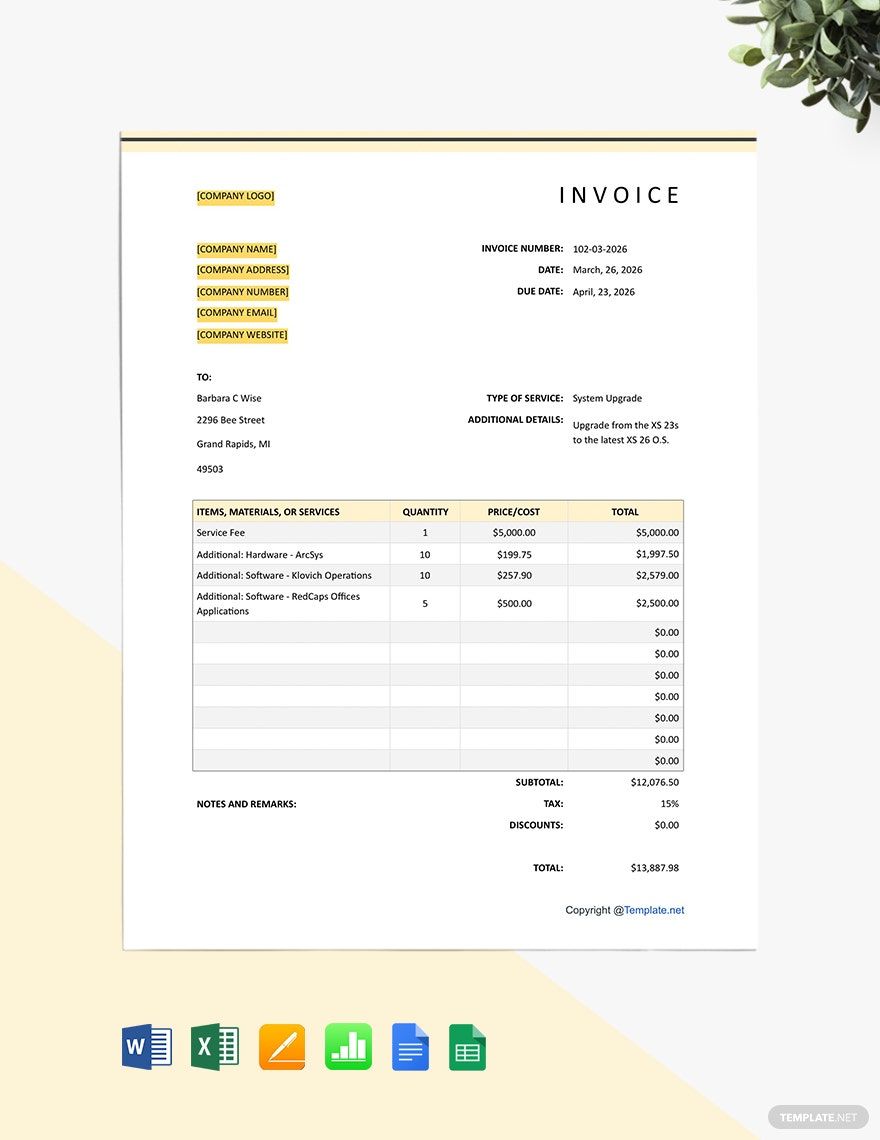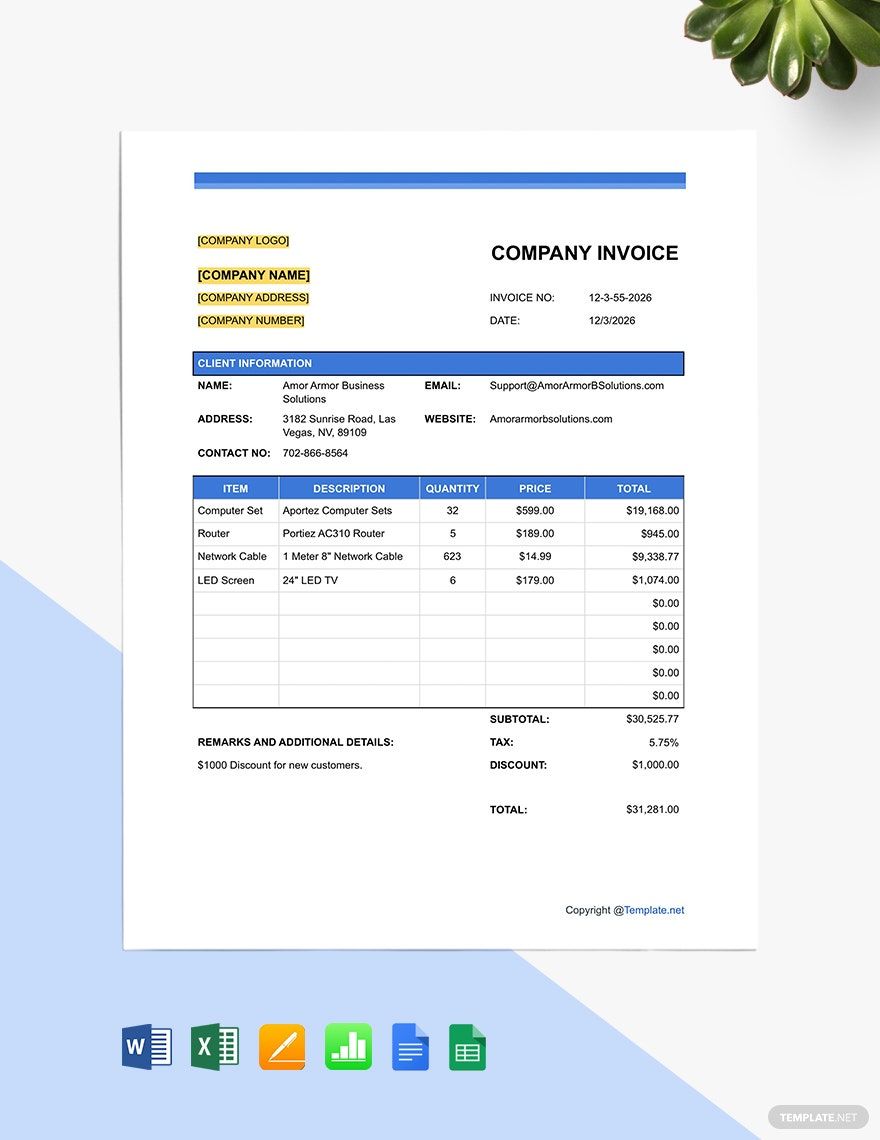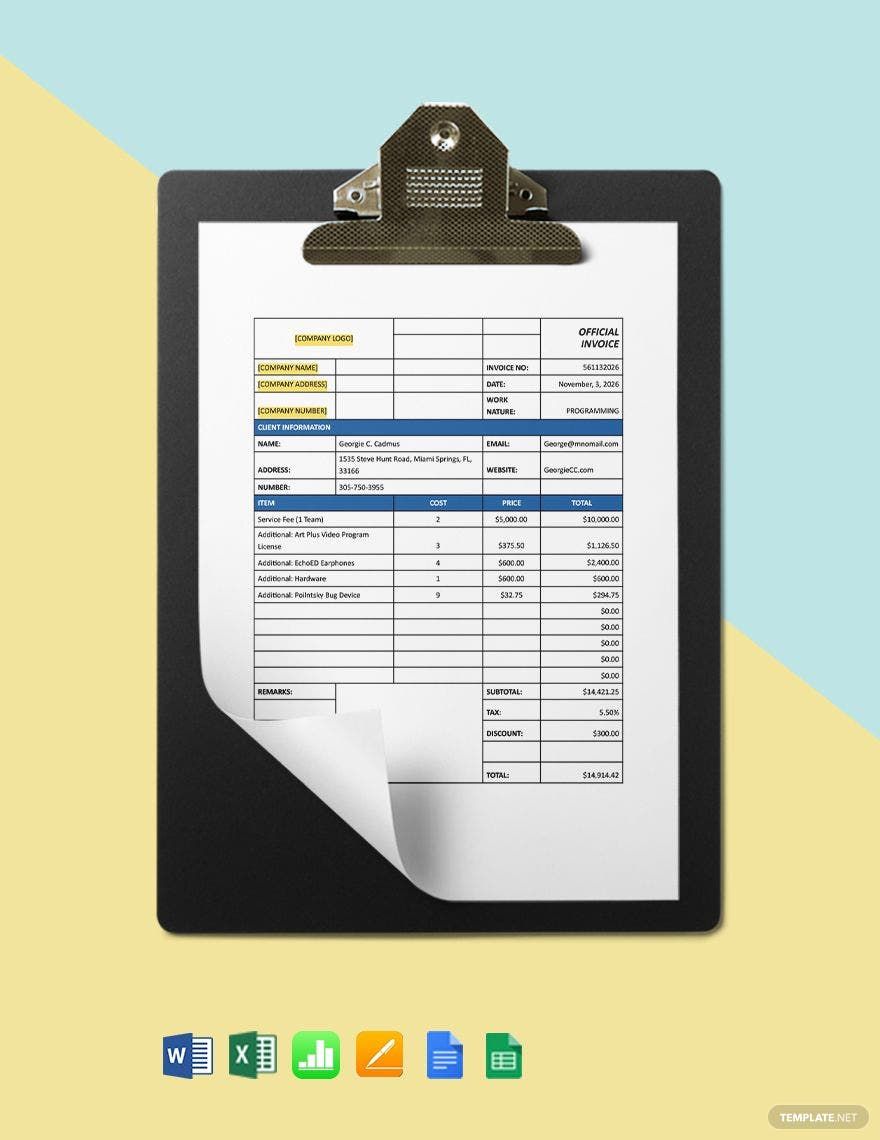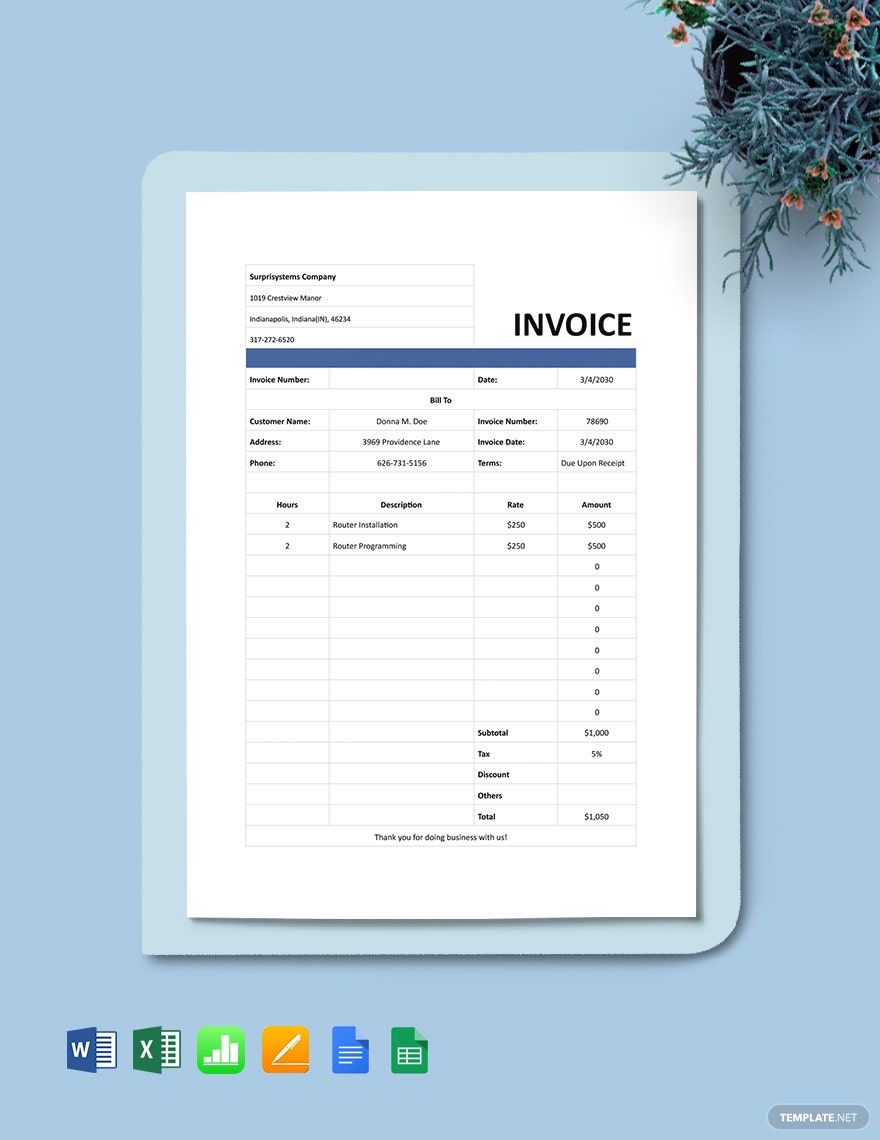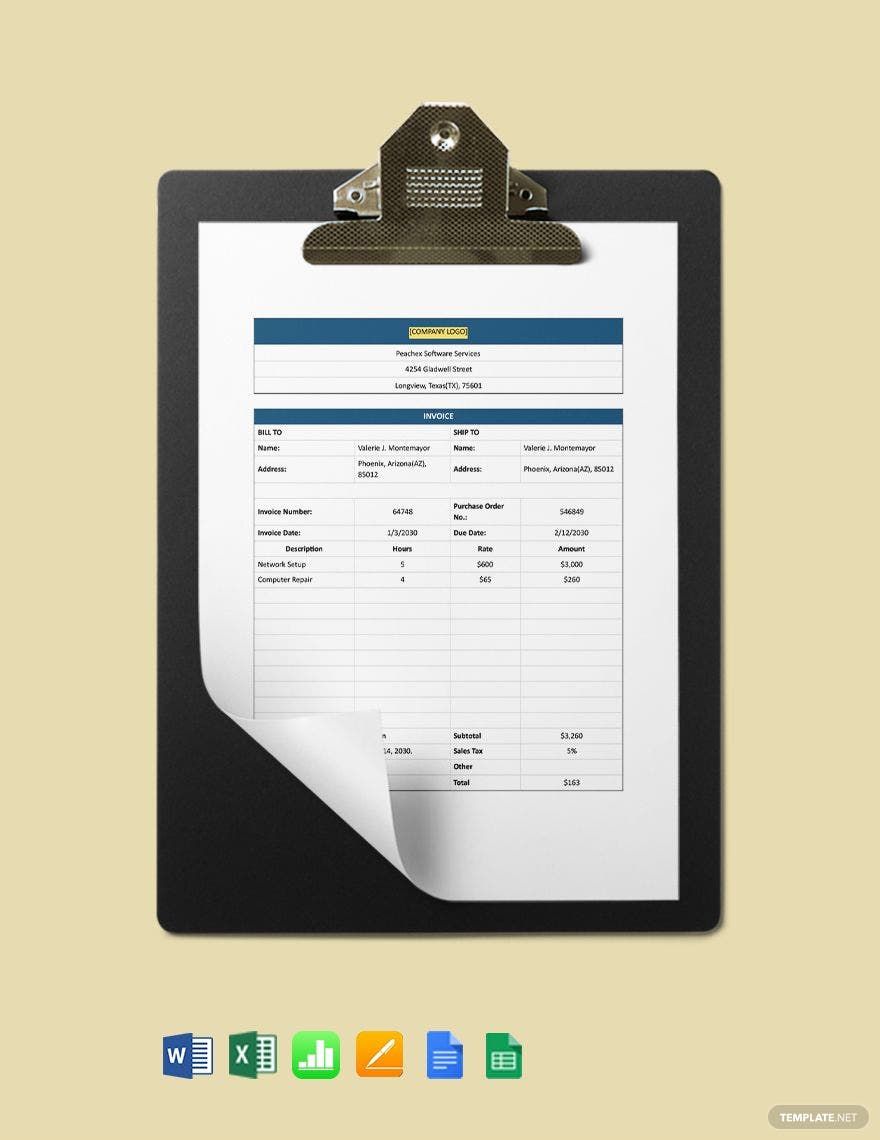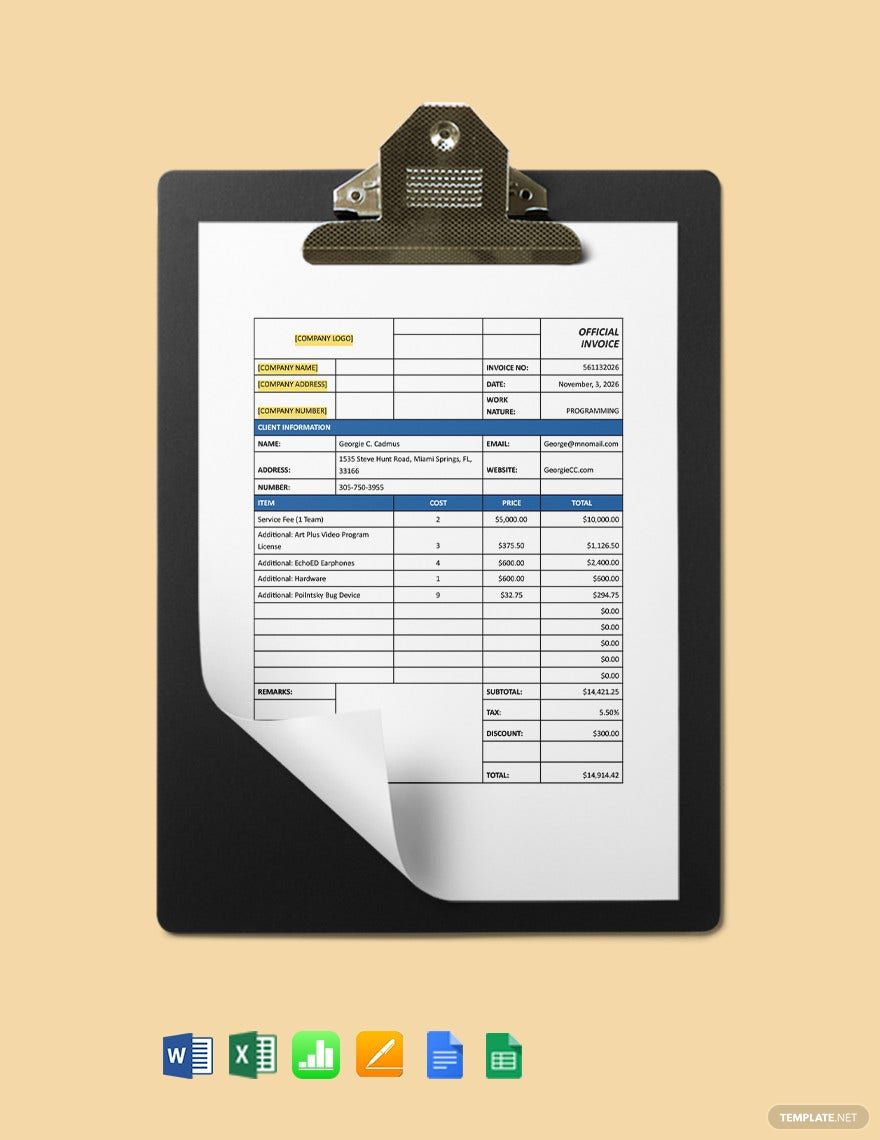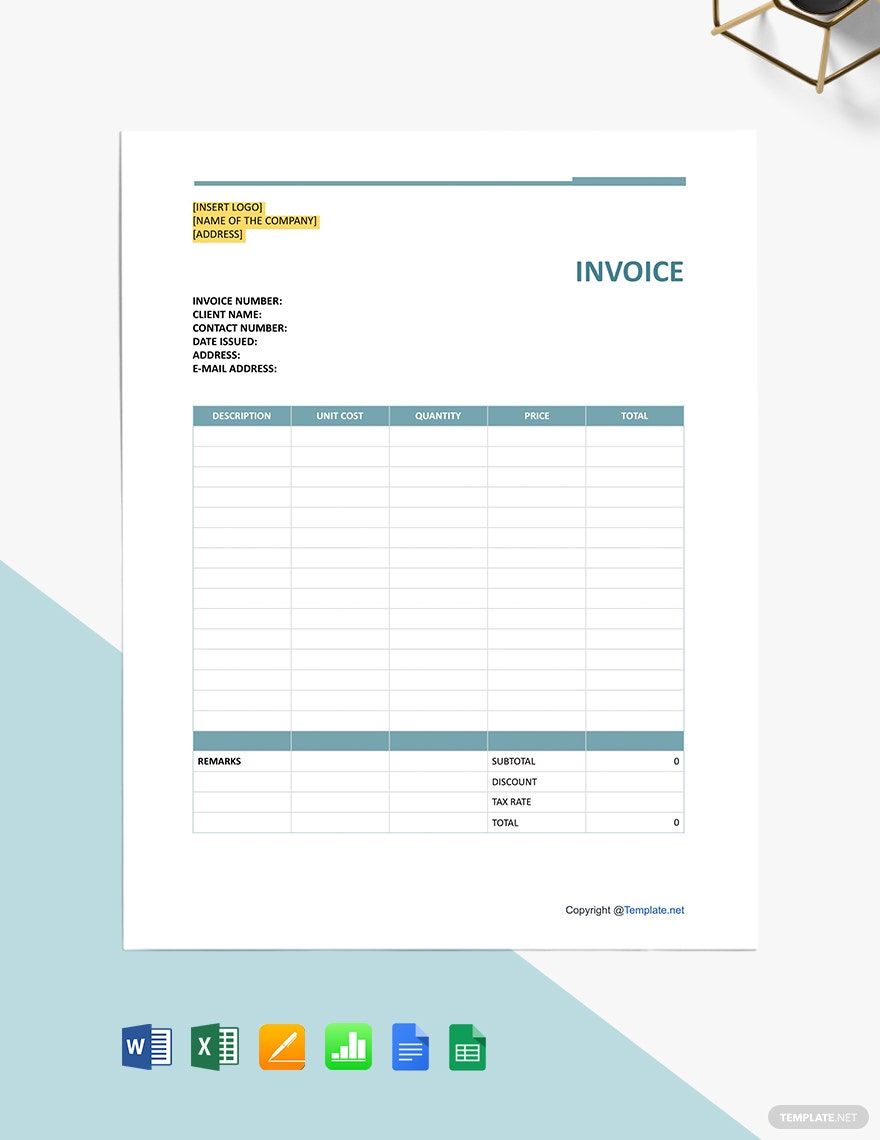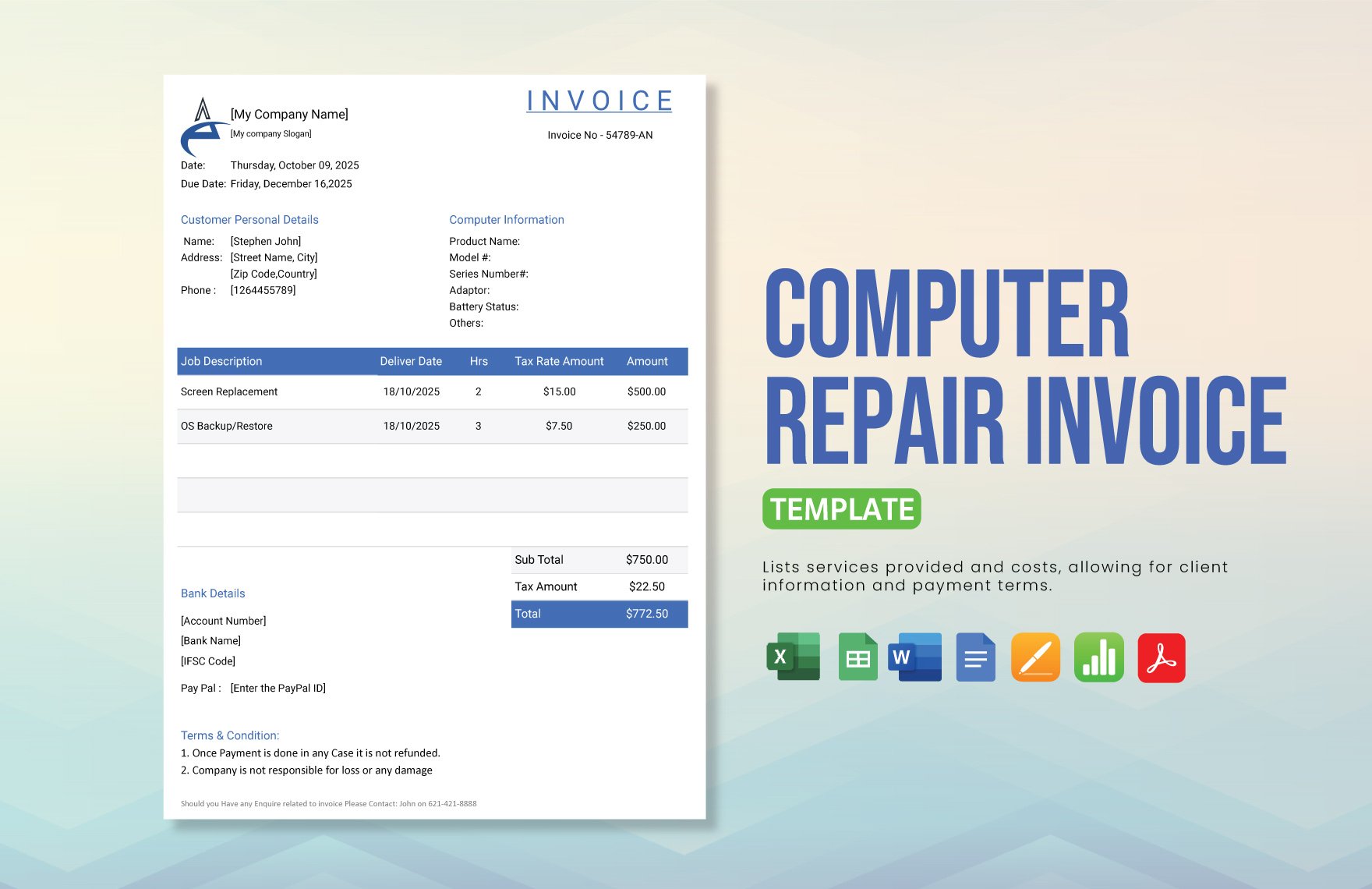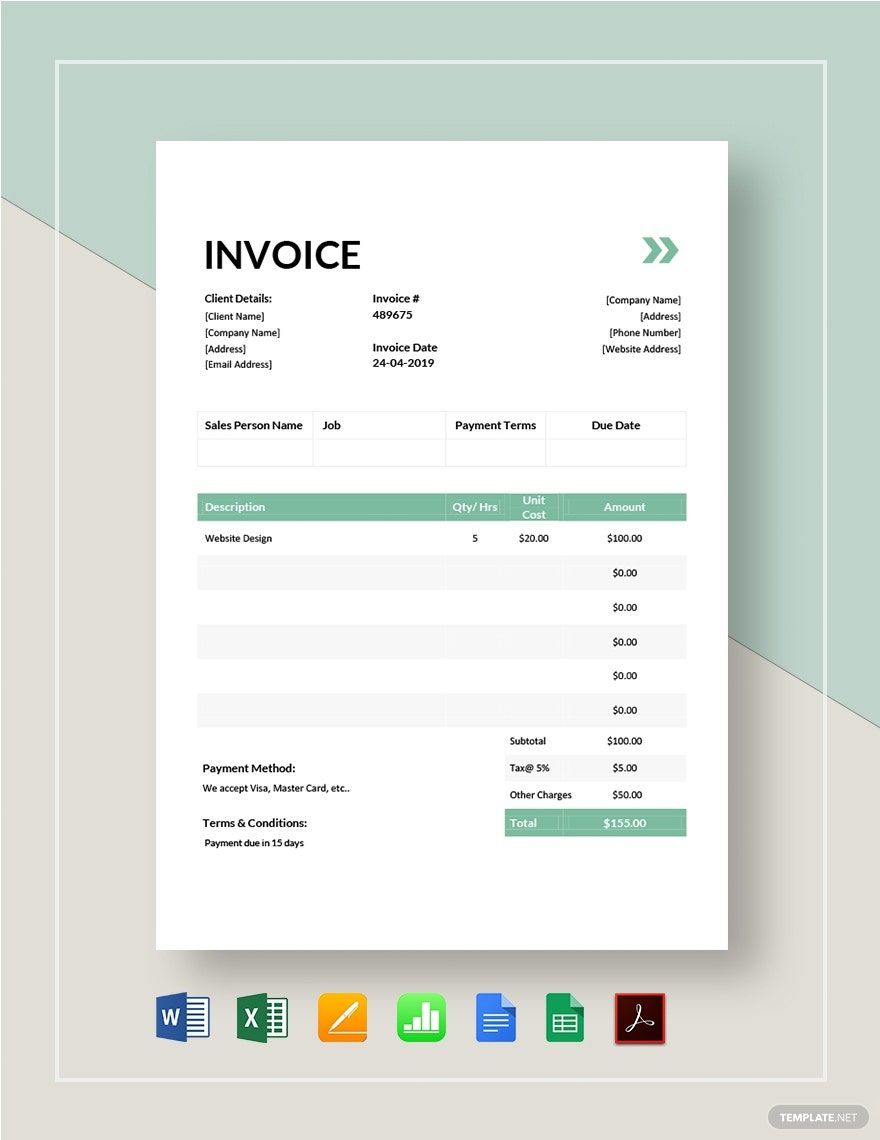Bring Your Billing Process to Life with IT and Software Invoice Templates from Template.net
Keep your finance team engaged, streamline your billing operations, and present a professional image with IT and Software Invoice Templates from Template.net. Perfectly designed for IT professionals and software companies, these templates allow you to manage billing efficiently and save valuable time. Whether you're looking to invoice for a big software development project or a monthly IT service subscription, these templates have you covered. They include all necessary details such as client information, itemized lists, and payment instructions. No design expertise is required to customize them—simply download and fill in your details. You'll benefit from the professional-grade design that ensures your invoices not only look great but meet industry standards. Additionally, these templates are versatile enough for print or digital distribution, making them suitable for any business model.
Discover the many invoice templates we have on hand specifically tailored for the IT and Software industries. Start by selecting a template, then easily swap in your own assets and tweak colors and fonts to match your brand identity. For those looking to add advanced touches, enjoy the convenience of dragging-and-dropping custom icons and graphics, or incorporate dynamic animated elements to enhance readability. Our AI-powered text tools simplify the process, making it enjoyable and entirely skill-free. With possibilities that are virtually endless, you'll never run short of options, thanks to our regularly updated library of templates. When you’re finished perfecting your invoice, you can download it in your preferred format or share it effortlessly via email to streamline your billing process even further.
